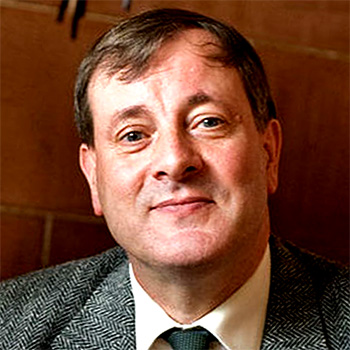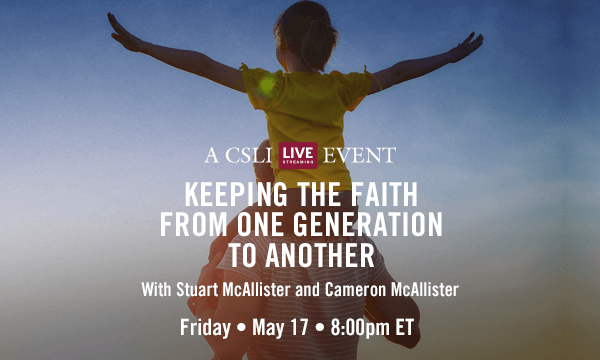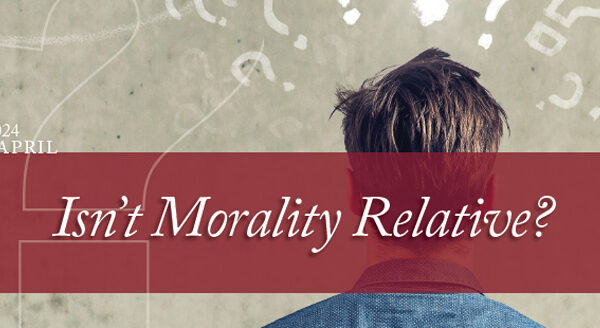Back to series


Download or Listen to Audio
Science and Faith
Click here to open a Print - Friendly PDF
In recent years, there has been growing interest in the relation of Christianity in the natural sciences. More and more people are appreciating that the nineteenth century idea that science and religion were somehow permanently in conflict is simply inconsistent with the facts, not least the very substantial number of Christians who are active in the fields of scientific research. Although I am now best known as a Christian theologian, my own background was in the natural sciences. I studied chemistry as an undergraduate at Oxford University, before going on to get a D.Phil. (Oxford’s version of a Ph.D.) in molecular biophysics. I have given much thought to the relation of the Christian faith and the natural sciences, and am delighted to have been invited to speak on this theme by the C. S. Lewis Institute in October.
The basic theme of my lectures will be the way in which the natural sciences can help our thinking about our faith, and the way our faith can help those who are actively working in the natural sciences. We will be looking at the way that the Christian faith helps us make sense of the world, and lays the foundation for a ‘spirituality of nature’. How can our faith help us to appreciate the natural world? How can we learn more about the creator from his creation? This point was explored by Bonaventura (1217-74), a medieval Franciscan philosopher and theologian, who shared St. Francis of Assissi’s keen eye for the importance of the creation as a guide to its creator:
All the creatures of this sensible world lead the soul of the wise and contemplative person to the eternal God, since they are the shadows, echoes and pictures, the vestiges, images and manifestations of that most powerful, most wise and best first principle, of that eternal origin, light and fullness, of that productive, exemplary and ordergiving Art. They are set before us for the sake of our knowing God, and are divinely given signs. For every creature is by its very nature a kind of portrayal and likeness of that eternal Wisdom.
If the world is indeed created, it follows that the beauty, goodness, and wisdom of its creator are reflected, however dimly, in the world around us. All of us have known a sense of delight at the beauty of the natural world. Yet this is but a shadow of the beauty of its creator. We see what is good, and realize that something still better lies beyond it. And what lies beyond is not an abstract, impersonal, and unknowable force, but a personal God who has created us in order to love and cherish us.
We will also give careful consideration to the writings of Richard Dawkins, who argues that the sciences are necessarily atheist. I will also say a few words about the three-volume work that I have just completed publishing, entitled A Scientific Theology. This work—which reviewers have already described as “the best systematic theology to appear for some years”— sets out to use the natural sciences as a dialogue partner for Christian theology, with some very interesting and significant results.
For C. S. Lewis, the discovery of Christianity was like taking hold of and possessing something intrinsically precious and beautiful, which allowed the rest of the world to be seen in its reflected radiance. He put the significance of his discovery like this: “I believe in Christianity as I believe that the sun has risen—not only because I see it, but because by it I see everything else.” The point that Lewis makes here is that our faith offers us a framework by which we can make sense of what we see around us. What might at first seem pointless or meaningless becomes immensely important. So what difference does this make? Let me explore this with reference to one question that we will consider in the course of the October lectures—the interpretation of the world.
Before discovering Christianity, I had seen the stars of the heavens as heightening our sense of transience and finitude, forcing us to ask whether this life is all that we can hope for. My growing knowledge of astronomy helped me appreciate the beauty of the universe. Yet it was a deeply melancholy beauty, in that I was unable to detach the glory of the heavens from the transience and fragility of the one observing that glory. It was as if the stars proclaimed the insignificance and transience of those they allowed to observe them.
I was totally in sympathy with the ideas I found in the Rubáiyát of Omar Khayyám, a classic work of Persian literature, which gives powerful expression to the deep sense of despondency evoked by the heavens. We are powerless to change our destiny. The sun, moon, and stars declare both our transience and apparent inability to change our situation.
And that inverted bowl we call “the Sky,”
Whereunder crawling cooped we live and die,
Lift not thy hands to It for help—for It
Rolls impotently on as Thou or I.
I thus saw the stars as a melancholy reminder of the vastness of the universe, and the utter insignificance of humanity within it. However, as this was the way things were, I had no problem in accepting it. It wasn’t especially attractive, but I somehow had to make the most of it.
That sort of thought has gone through the minds of many natural scientists, and is particularly well expressed in Ursula Goodenough’s reflective book The Sacred Depths of Nature (1998). As one of North America’s leading cell biologists, Goodenough recalls how she used to gaze at the night sky, reflecting on what she observed. Each of the stars she saw was dying, as would our own special star, the sun. “Our sun too will die, frying the Earth to a crisp during its heat-death, spewing its bits and pieces out into the frigid nothingness of curved spacetime.” She found such thoughts to be overwhelming and oppressive:
The night sky was ruined. I would never be able to look at it again. . . . A bleak emptiness overtook me whenever I thought about what was really going on out in the cosmos or deep in the atom. So I did my best not to think about such things.
I felt exactly that same sense of melancholy, and devised more or less the same coping plan. It was best not to think about the pointlessness of life. One of those who lectured to me on quantum theory at Oxford at this time was Peter Atkins, a physical chemist with a strong commitment to atheism. He would later write as follows concerning this sense of purposelessness, which he had no difficulty in affirming:
We are the children of chaos, and the deep structure of change is decay. At root, there is only corruption, and that unstemmable tide of chaos. Gone is purpose; all that is left is direction. This is the bleakness we have to accept
as we peer deeply and dispassionately into the heart of the Universe.
All rather bleak, no doubt, but a perfectly legitimate angle on the Second Law of Thermodynamics. I was perfectly prepared to accept this intellectually, although it was emotionally a little challenging.
Although I once shared that angle on things, I do so no longer. When I began to think of the world as created, my outlook changed entirely. Different perspectives were opened up for me. The stars, of course, remained as they were. Yet the way I viewed them altered radically. No longer were they harbingers of transience. They were now symbols of a wisdom and care of a God who knew and loved me. The words of Psalm 8 expressed my new attitude rather well:
When I look at your heavens, the work of your fingers The moon and stars that you have established;
What are human beings that you are mindful of them, Mortals, that you care for them?
Yet you have made them a little lower than God, And crowned them with glory and honor.
The stars now became signs of the providence of God, who knows them and calls them by name (Psalm 147:4). No longer were the stars silent pointers to human transience; they were scintillating heralds of the love of God. I was not alone in the universe, but walked and lived in the presence of a God who knew me, and would never forget me. And the natural world was somehow “charged with the grandeur of God” (Gerard Manley Hopkins). And once nature is seen as God’s creation, it can never be seen as ordinary again.
This is the difference that Christianity makes to the way we see the world. Yet the ability of our faith to help our thinking about science goes far beyond this. The Cambridge theoretical physicist and theologian John Polkinghorne points to the importance of the Christian doctrine of creation, noting the need for offering an explanation of why the human mind is able to uncover and grasp the structures of the world:
We are so familiar with the fact that we can understand the world that most of the time we take it for granted. It is what makes science possible. Yet it could have been otherwise. The universe might have been a disorderly
chaos rather than an orderly cosmos. Or it might have had a rationality which was inaccessible to us….There is a congruence between our minds and the universe, between the rationality experienced within and the
rationality observed without.
That human beings have been remarkably successful in investigating and grasping something of the structure and workings of the world is beyond dispute. Precisely why the rationality of the world should be so accessible to human beings remains rather more puzzling. Polkinghorne offers a Christian explanation of this phenomenon as follows:
If the deep-seated congruence of the rationality present in our minds with the rationality present in the world is
to find a true explanation, it must surely lie in some more profound reason which is the ground of both. Such a
reason would be provided by the Rationality of the Creator.
The basic Christian idea that humanity is created in the “image of God” has long been seen by Christian theologians as offering both an explanation of the human capacity to understand the world, and also a stimulus to a greater encounter and engagement with the natural order. While this idea can be found throughout Christian history, it is stated with particular clarity by Augustine of Hippo in the early fifth century:
The image of the creator is to be found in the rational or intellectual soul of humanity . . .
[which] has been created according to the image of God in order that it may use reason
and intellect in order to apprehend and behold God.
This basic idea lies behind the Christian engagement with the natural world, especially in the sixteenth and early seventeenth centuries. Thus the astronomer Johann Kepler, who made huge advances in our understanding of planetary orbits, had no doubt that the reason for the success of mathematics in clarifying the nature of these orbits lay in the creation of the world and the human mind by God.
In that geometry is part of the divine mind from the origins of time, even from before the origins of time (for what is there in God that is not also from God?) it has provided God with the patterns for the creation of the world, and has been transferred to humanity with the image of God.
A similar point was made by Galileo Galilei, who attributed the success of his astronomical theories to mathematics being grounded in the being of God. And needless to say, it also plays an important role in the thought of C. S. Lewis.
The way Richard Dawkins presents things, of course, religious people should have been—and should still be!—implacably hostile to the sciences. For religious people to like the sciences is about as likely as turkeys looking forward to Thanksgiving. The historical evidence simply does not permit such an extravagant conclusion to be drawn, although there has been no shortage of those who sought to do so. For example, the controversy between Galileo and the church authorities is often portrayed as a direct confrontation between science and religion, especially by those writers wishing to perpetuate the myth that science and religion are perpetually at war. As close historical scrutiny of this episode has shown, however, the reality is quite different, and rather more interesting, involving the complexities of political patronage at a particularly unstable juncture in the history of the papal court, leaving Galileo on the losing side of a court intrigue. That, however, is another story, which deserves to be told in more detail elsewhere. And as recent surveys have made clear, the relationship between faith and science is much more complicated—and much more interesting!—than aggressively atheist writers such as Dawkins allow.
These thoughts are just samplers for October’s more detailed engagement with the issues. I hope you will come and enjoy our time together!

Alister McGrath
Professor
Alister McGrath serves as Senior Research Fellow at the Ian Ramsey Centre for Science and Religion at Oxford. He has also served as the Senior Research Fellow at Harris Manchester College in Oxford, the President of the Oxford Centre for Christian Apologetics and associate priest in Cotswolds for a group of village parishes (Church of England.) McGrath’s best known books include The Twilight of Atheism, The Dawkins Delusion?, Dawkins’ God: Genes, Memes, and the Meaning of Life, A Scientific Theology and his most recent, Coming to Faith Through Dawkins: 12 Essays on the Pathway from New Atheism to Christianity, co-authored with Denis Alexander. He received his MA and DPhil from Oxford University.

 COPYRIGHT: This publication is published by C.S. Lewis Institute; 8001 Braddock Road, Suite 301; Springfield, VA 22151. Portions of the publication may be reproduced for noncommercial, local church or ministry use without prior permission. Electronic copies of the PDF files may be duplicated and transmitted via e-mail for personal and church use. Articles may not be modified without prior written permission of the Institute. For questions, contact the Institute: 703.914.5602 or email us.
COPYRIGHT: This publication is published by C.S. Lewis Institute; 8001 Braddock Road, Suite 301; Springfield, VA 22151. Portions of the publication may be reproduced for noncommercial, local church or ministry use without prior permission. Electronic copies of the PDF files may be duplicated and transmitted via e-mail for personal and church use. Articles may not be modified without prior written permission of the Institute. For questions, contact the Institute: 703.914.5602 or email us.
-
Recent Podcasts
A Welcome Change in Apologetics
by Randy Newman, Aimee Riegert on April 19, 2024We’re burdened for our friends who don’t know...Read More
-
Questions That Matter Podcast – Samuel James and Digital Liturgies
by Samuel James, Randy Newman on April 19, 2024
-
The Side B Stories – Dr. James Tour’s story
by Jana Harmon, James Tour on April 12, 2024
-
Recent Publications
Isn’t Morality Relative?
by Christopher L. Reese on April 1, 2024It is widely accepted in the Western world...Read More
-
Do Muslims and Christians Worship the Same God?
by Andy Bannister on March 1, 2024
-
Artificial Intelligence and Its Impacts on Humanity
by John Lennox on February 13, 2024
0
All Booked
0.00
All Booked
0.00
All Booked
22140
GLOBAL EVENT: Keeping the Faith From One Generation To Another with Stuart McAllister and Cameron McAllister, 8:00PM ET
https://www.cslewisinstitute.org/?event=global-event-keeping-the-faith-from-one-generation-to-another-with-stuart-mcallister-and-cameron-mcallister-800pm-et&event_date=2024-05-17®=1
https://www.paypal.com/cgi-bin/webscr
2024-05-17

Next coming event
Days
Hours
Minutes
Seconds
GLOBAL EVENT: Keeping the Faith From One Generation To Another with Stuart McAllister and Cameron McAllister, 8:00PM ET
On May 17, 2024 at 8:00 pmSpeakers

Alister McGrath
Professor
Team Members

Alister McGrath
Professor
Alister McGrath serves as Senior Research Fellow at the Ian Ramsey Centre for Science and Religion at Oxford. He has also served as the Senior Research Fellow at Harris Manchester College in Oxford, the President of the Oxford Centre for Christian Apologetics and associate priest in Cotswolds for a group of village parishes (Church of England.) McGrath’s best known books include The Twilight of Atheism, The Dawkins Delusion?, Dawkins’ God: Genes, Memes, and the Meaning of Life, A Scientific Theology and his most recent, Coming to Faith Through Dawkins: 12 Essays on the Pathway from New Atheism to Christianity, co-authored with Denis Alexander. He received his MA and DPhil from Oxford University.





